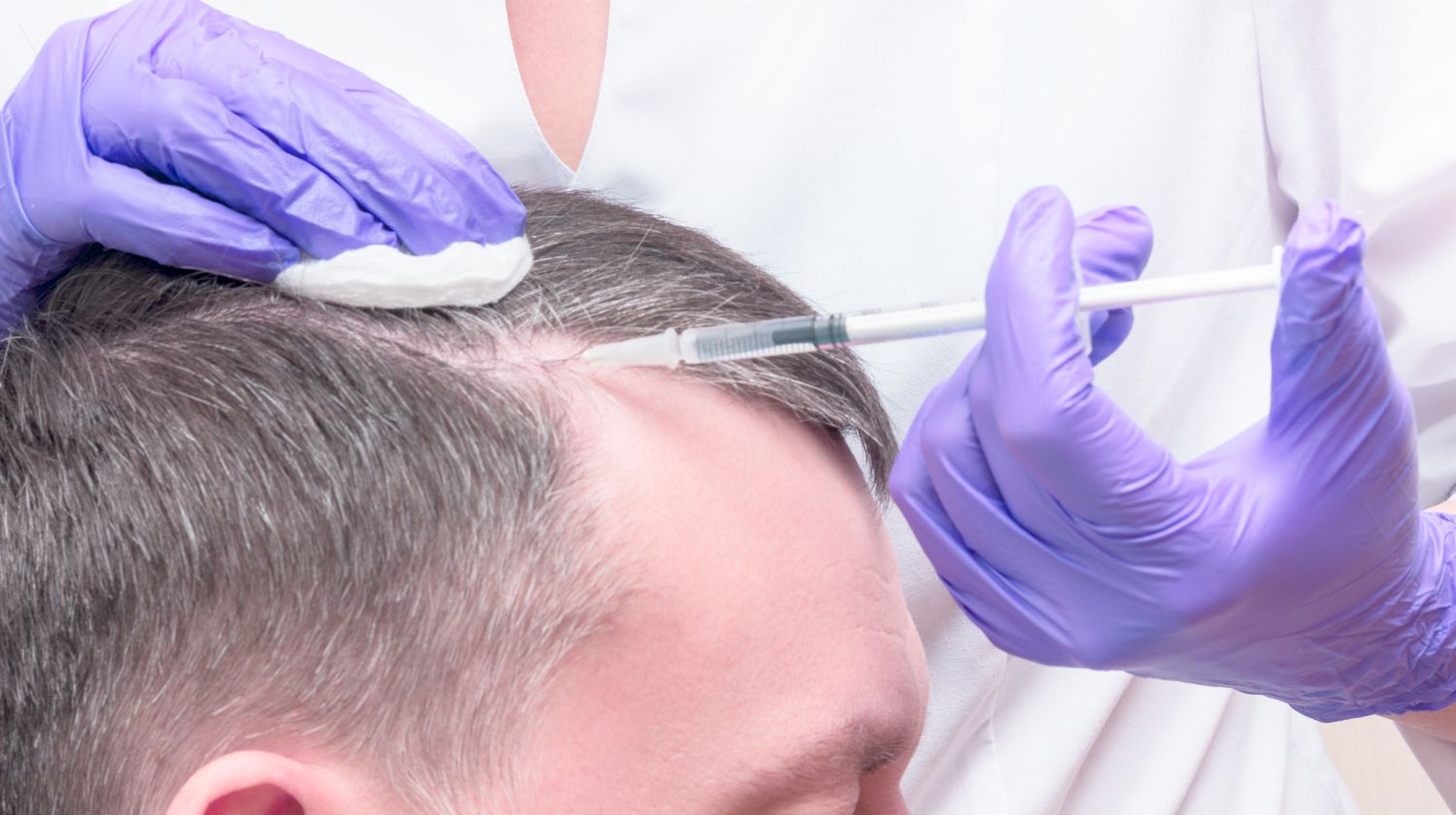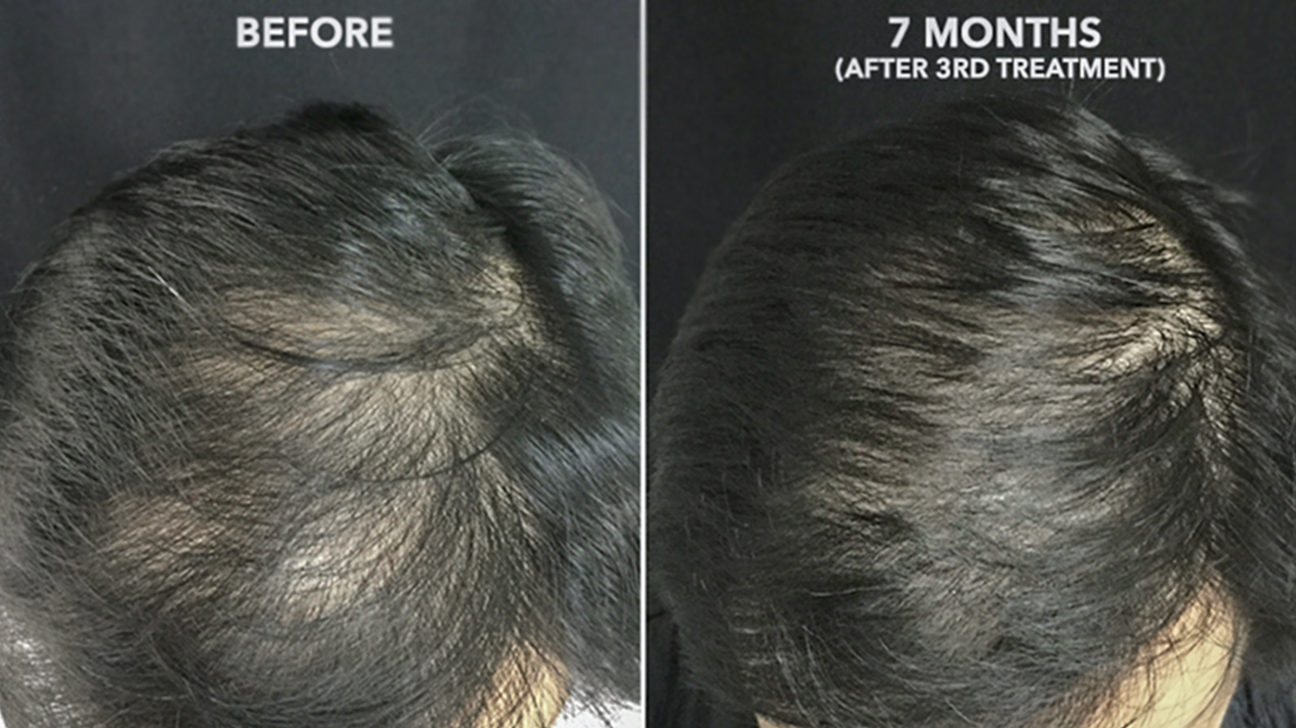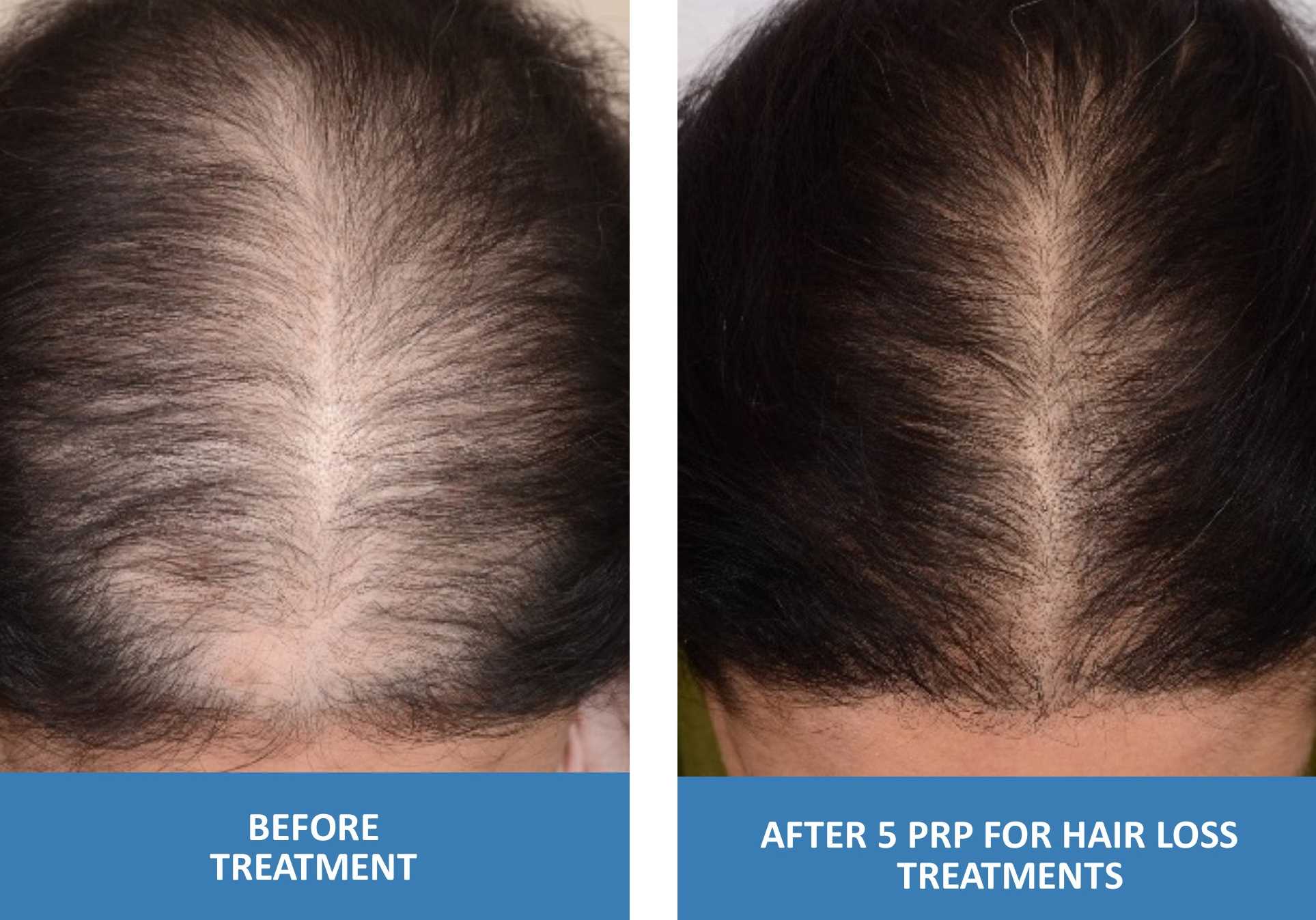Table Of Content

About 50 million American men and 30 million women have male- or female-pattern baldness. It can begin early in life, but is much more common after the age of 50, when more than 50% of men will experience some kind of hair loss. Platelet-rich plasma (PRP) is the portion of plasma derived from whole blood, with higher platelet concentration compared to the baseline. Within the platelets are growth factors that have many applications and indications. The International Society of Hair Restoration Surgery (ISHRS) is a global non-profit medical association and the leading authority on hair loss treatment and restoration. For some patients, PRP treatments are only needed for a short period of time.
Researchers see promising results

The same is true of medications that doctors commonly use to treat androgenetic alopecia, such as topical minoxidil (Regaine) and oral finasteride (Propecia). PRP contains a range of growth factors and proteins that speed tissue repair. As some types of hair loss result from damage to hair follicles, researchers initially hypothesized that PRP could help regrow hair by reversing the process that occurs in androgenetic alopecia. PRP operates by stimulating the hair follicles and encouraging hair growth. When PRP is injected into the scalp, it delivers a rich source of growth factors that can rejuvenate dormant or weakened hair follicles. This process ultimately leads to stronger, thicker, and healthier hair regrowth.
What Are the Different Types of Alopecia Areata?
Most people feel pressure during the treatment, with minimal to no pain. PRP is a substance drawn from your blood and injected into your scalp that can purportedly help heal bodily tissues, including follicles from which your hairs grow. PRP therapy is a treatment for hair loss that may help promote and maintain hair growth. These treatments that emit red- or near-infrared light are believed to stimulate hair follicles to help hair grow, with a lower risk of side effects compared to topical creams and oral medications.
PRP for Hair Loss
So, take it easy on your skin ahead of the facial (maybe even use an electric razor in the days leading up, rather than a razor blade). Finally, keep in mind that the same healthy habits recommended for maintaining your physical health will also help your hair. Try to find ways to manage stress, and strive for a well-balanced diet that includes plenty of fruits and vegetables.
A 2021 review of 15 studies — including several large randomized control trials that are the gold standard for medical research — found that laser therapy increased hair count in both men and women. You can either purchase over-the-counter laser devices to use at home or receive the treatments from a provider. PRP treatment presents several potential benefits, such as enhanced hair growth, increased hair thickness, and reduced hair loss.
Only one side of their scalp was injected with PRP in 3 sessions one month apart. For the average patient, this process needs to be repeated three times with 4 to 6 weeks in between. In addition, you’ll have to have a single PRP injection session every 6 months for maintenance. Hematologists initially used the PRP injections in the early 1970s to treat thrombocytopenia, a condition where a patient suffers a lack of enough platelet plasma in their blood.
Here are 4 non-surgical hair loss treatments - Hindustan Times
Here are 4 non-surgical hair loss treatments.
Posted: Mon, 20 Nov 2023 08:00:00 GMT [source]
Are PRP Injections Safe?
In fact, they've been used in medicine to treat a range of health issues, including arthritis, signs of aging, etc. The good news for anyone with thinning hair, says Zeichner, is that growth factors can "help stimulate the activity of the hair follicles and promote new hair growth." Several studies exploring the effects of PRP on hair loss found it is a safe, effective way to promote hair growth. Patients sometimes experience hair shedding due to the injection procedure used with platelet-rich plasma (PRP).
The PRP is injected very superficially into the skin of the scalp in areas of hair loss with the expectation that the growth factors will produce thicker, darker, healthier, and more cosmetically effective hair growth. Though PRP to treat hair loss is relatively new, research has been promising. A small study published in the April–June 2014 issue of the Journal of Cutaneous and Aesthetic Surgery tested PRP on 11 men with androgenetic alopecia who had not had success after six months of medication.
Scarring alopecia is the most devastating type of hair loss, Mirmirani says, because it permanently destroys the hair follicles. The most common cause of alopecia is an inherited condition called male- or female-pattern hair loss. Some doctors are now using PRP therapy to encourage hair growth, promote muscle healing, and treat the symptoms of arthritis. Real-life patient testimonials and success stories can provide valuable insights into the effectiveness of PRP for hair loss. Hearing about the experiences of others can help you make a well-informed decision regarding your hair loss treatment.
In this article, we describe how doctors use PRP to treat hair loss and what researchers say about its effectiveness. If you’re unsure about whether PRP therapy is right for you, speak with a healthcare professional. It’s important to note that not many insurance companies cover PRP therapy for hair loss. If you have insurance, speak with your provider to see whether they cover it.
Friends, family members or an internist or primary care doctor are often helpful in suggesting the best surgeon. Once the results become more apparent, Dr. Jobarteh-Williams says it’ll be recommended that your maintenance treatments move to once or twice a year thereafter. Dr. Kourosh adds that the best results are seen in people who combine PRP treatments with other therapies for hair growth. The process is meticulous — with injections beginning across the scalp, approximately at every half inch over the area of thinning hair — but typically, the entire procedure takes less than a half-hour. There are approximately 54 million men and 32 million women in the US who have some degree of hair loss.
To date, there has been no conclusive evidence of its effectiveness, or standardization of treatment. As a result, some health bodies and organizations strongly recommend against the use of PRP treatments. However, studies in this area are inconclusive on the benefit of PRP treatments. A 2021 review suggests that the lack of standardization in the preparation and use of PRP could be a factor in these inconclusive reports. A 2018 review also notes that PRP therapies may help reduce pain and improve healing in ligament and tendon damage cases.
Minimize the use of high-heat styling tools, hair extensions and harsh treatments like perms. Avoid hairstyles like tight buns and braids that pull on your scalp, potentially causing traction alopecia. If you often wear a hairstyle like braids or a tight bun that puts prolonged strain or stress on the hair follicle, that can cause a type of permanent hair loss called traction alopecia. For instance, medical professionals may mix PRP with other bone graft therapies to enhance tissue repair. Doctors may also use PRP therapies to treat other muscular, skeletal, or skin conditions. Platelets are blood cells that play an important role in wound healing.

No comments:
Post a Comment